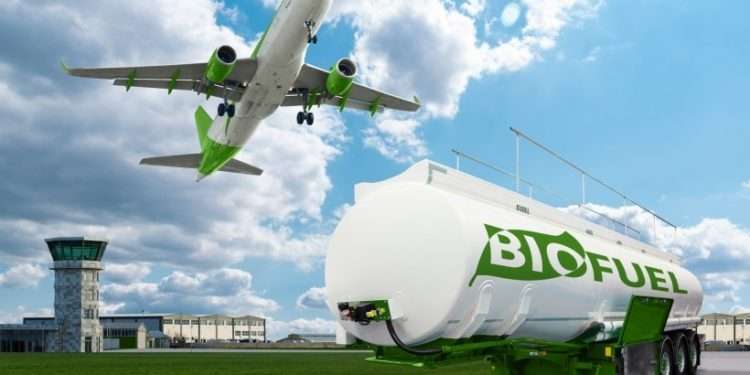Sustainable aviation fuel market to reach $14 billion by 2030
As primary factors to the rise, the study cites increasing demand due to more passengers and aircraft, along with the rising production of SAF due to the availability and low cost of “wet waste” feedstock such as food waste, animal manure, and other high-water-content materials.
The global sustainable aviation fuel (SAF) market is expected to increase from $216 million today to more than $14 billion by 2030, according to a new report by market research firm The Brainy Insights.
As primary factors to the rise, the study cites increasing demand due to more passengers and aircraft, along with the rising production of SAF due to the availability and low cost of “wet waste” feedstock such as food waste, animal manure, and other high-water-content materials.
The report also notes the growth of the market is being sustained by increasing private and governmental support, along with international concern about the carbon emissions caused by the aviation sector. Additionally, the study looked at blending ratios and found that the 30 to 50 percent SAF blend segment led the market with a 41 percent share in 2021.
In terms of production pathways, the Fischer-Tropsch synthetic paraffinic kerosene occupied the largest share of worldwide production at 27 percent, and the report authors say that by the end of the outlook window it will dominate the market.
In 2021, military aviation represented the largest share of users in the market due to defence budgets and governmental initiatives, but by 2030 the report says that it will be supplanted by commercial aviation due to the anticipated increasing passenger load.
The North American market was the largest user of SAF, accounting for nearly half of the production. Over the projection period, the Asia-Pacific region is expected to show the most rapid growth due to proliferating low-cost airlines and developing aviation infrastructure.Sustainable aviation fuel market to reach $14 billion by 2030
The global sustainable aviation fuel (SAF) market is expected to increase from $216 million today to more than $14 billion by 2030, according to a new report by market research firm The Brainy Insights.
As primary factors to the rise, the study cites increasing demand due to more passengers and aircraft, along with the rising production of SAF due to the availability and low cost of “wet waste” feedstock such as food waste, animal manure, and other high-water-content materials.
The report also notes the growth of the market is being sustained by increasing private and governmental support, along with international concern about the carbon emissions caused by the aviation sector. Additionally, the study looked at blending ratios and found that the 30 to 50 percent SAF blend segment led the market with a 41 percent share in 2021.
In terms of production pathways, the Fischer-Tropsch synthetic paraffinic kerosene occupied the largest share of worldwide production at 27 percent, and the report authors say that by the end of the outlook window it will dominate the market.
In 2021, military aviation represented the largest share of users in the market due to defence budgets and governmental initiatives, but by 2030 the report says that it will be supplanted by commercial aviation due to the anticipated increasing passenger load.
The North American market was the largest user of SAF, accounting for nearly half of the production. Over the projection period, the Asia-Pacific region is expected to show the most rapid growth due to proliferating low-cost airlines and developing aviation infrastructure.
Source: norvanreports.com


